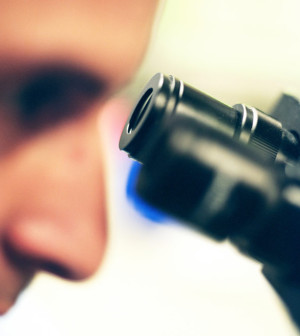- Navigating Your Midlife Crisis: Embracing New Possibilities
- City Raccoons Showing Signs of Domestication
- Mapping the Exposome: Science Broadens Focus to Environmental Disease Triggers
- One Week Less on Social Media Linked to Better Mental Health
- Your Brain Changes in Stages as You Age, Study Finds
- Some Suicide Victims Show No Typical Warning Signs, Study Finds
- ByHeart Formula Faces Lawsuits After Babies Sickened With Botulism
- Switch to Vegan Diet Could Cut Your Greenhouse Gas Emissions in Half
- Regular Bedtime Does Wonders for Blood Pressure
- Dining Alone Could Mean Worse Nutrition for Seniors
Some Like It Hot! Lab Mice, in Particular

Too-cool living conditions for lab mice could affect study results, researchers suggest.
They said the temperature in a typical mouse laboratory is between 68 degrees and nearly 79 degrees Fahrenheit (between 20 degrees and 26 degrees Celsius), but the ideal temperature for mice is about 86 degrees F (30 degrees C).
While a cooler temperature doesn’t harm the mice, it does make them use more energy to maintain their core temperature. And, there is increasing evidence that this affects the results of studies on new drugs, cancer, inflammation and other conditions, the researchers said.
Their report is outlined in a paper published April 19 in the journal Trends in Cancer.
“Most people only look at results from experiments at standard lab temperatures,” said study co-author Bonnie Hylander, an immunologist at the Roswell Park Cancer Institute, in Buffalo, N.Y.
“They’re not necessarily aware that if you repeat the experiments with mice at a different temperature, you might get a different outcome,” she said in a journal news release.
However, it isn’t as simple as a higher thermostat setting. The researchers explained that lab personnel get overheated wearing gowns, gloves and masks when working with animals, and a lower room temperature also keeps the smell down.
“Working at a thermoneutral temperature for mice isn’t very pleasant for people. It’s hot, and it’s hard for people to work very long when they’re overheated,” Hylander said.
Instead, researchers should report the room temperature in their mouse laboratories and be aware that a number of factors — such as cage positions, number of mice per cage, and type of disease in the mice — can affect their degree of cold stress.
Also, researchers can conduct test experiments at various temperatures to find how they affect outcomes. For example, mice could be kept warmer by placing them in incubators or providing them with more nesting material.
“We’re not saying one housing temperature is better than another,” study co-author Elizabeth Repasky, also an immunologist at the Roswell Park Cancer Institute, said in the news release.
“The different temperatures are simply resulting in differences in experimental outcomes, which could be important. I think a lot more research is needed to optimize the use of mice for testing therapies that will be useful in people,” she said.
More information
Canadians for Health Research has more about mice and research.
Source: HealthDay
Copyright © 2025 HealthDay. All rights reserved.










